

66th Anniversary of the Liberation of Auschwitz
International Day of Commemoration in Memory of Those Murdered by the Nazis
On January 27, 1945, near the end of the Second World War, the advancing Soviet Red Army entered the Nazis' Auschwitz II-Birkenau extermination camp, liberating more than 7,000 remaining prisoners, most of whom were ill or dying. In 2005, the United Nations General Assembly designated January 27 as the International Day of Commemoration in memory of those murdered by the Nazis.
Today, as we commemorate the victims of the Nazis, we are duty-bound to note the prominence of the same Nazi banking and industrial interests today and what they and their political representatives are up to, not only in Germany but in the U.S., Canada and other countries. We are not only concerned with the fact that these scions of industry and banking established Auschwitz and benefitted from its slave labour and extermination programs. We are mainly concerned with what they are up to today to make sure it never happens again.
TML calls on Canadian workers and youth to mark the anniversary of the liberation of Auschwitz by the Red Army by taking clear stock of attempts by current governments, including that of Stephen Harper, to resurrect Nazi war criminals by claiming that they were just ordinary men and women who fell victim to the crimes of so-called totalitarian communism. Why are they doing this? What aim does it serve today and why is it of concern to not only the Canadian working class and youth but to Canadians from all backgrounds, including all those who sacrificed in World War II to rid the world of the Nazi menace. Let us today imbue with new life the call of those who suffered in the first Great War: Never Again!
Lest we forget, on this occasion TML is publishing below an article "About Auschwitz" by Dougal MacDonald.
About Auschwitz
- Dougal MacDonald -
Auschwitz was a complex of labour and extermination camps built by the Nazis from 1940-42 in annexed Polish areas around the city of Oswiecim, about 50 km west of Krakow. The biggest Nazi concentration camp, it consisted of three large camps: the main camp Auschwitz I, the Auschwitz II-Birkenau extermination camp where 90 per cent of prisoners died, and Auschwitz III-Monowitz which supplied slave labour for chemical monopoly I.G. Farben. There were also more than 40 smaller sub-camps that exploited prisoners as slave labour in various industrial plants, armaments factories, coal mines, construction sites and farms. At first only Poles were imprisoned but later on Soviet prisoners of war, Romanies ("gypsies") and people of other nationalities were also incarcerated.
A Soviet document of May 6, 1945, officially acknowledged by the Nuremberg War Crimes trials, established that the Nazis exterminated four million people at Auschwitz (through execution, torture, starvation, illness, exhaustion and murderous medical experiments), and from 1948-89 a commemorative monument at the camp site honored the four million victims. Trying to diminish the enormity of Nazi crimes, the imperialists later reduced the deaths to 1.5 million, the "official" number inscribed on the new Auschwitz memorial in January 1995. The change created a propaganda windfall for the neo-Nazis whose big lie is that the Nazis and their collaborators did not murder anybody.
Auschwitz was a joint project of German and U.S. monopoly capitalism, which financed, built, and operated the camp, savagely exploited prisoner slave labour for profit and organized the extermination of the inmates. A few examples can be given of the many German monopolies involved. The archives of the Deutsche Bank "discovered" in 1999, contain detailed records of loans to companies that constructed camp facilities and that built the adjacent I.G. Farben chemical plant which used prisoners as slave labour, 25,000 of whom died. The I.G. Farben monopoly produced the Zyklon B gas used to exterminate prisoners, as well as many other products for the Nazi war machine. Insurance monopoly Allianz insured the property and personnel of Auschwitz. Ferdinand Porsche contacted SS leader Heinrich Himmler directly to request slaves from Auschwitz for his Volkswagen factory.
Red Army soldiers bear witness to Nazi atrocities at Auschwitz.
There are also many examples of collaboration between German and U.S. corporations which are still collaborating today. German monopoly AEG produced Auschwitz's electrical equipment, using camp slave labour, while German monopoly Siemens exploited almost 100,000 slave labourers in a factory inside Auschwitz that supplied the camp with electricity. The U.S. monopoly General Electric owned 30 per cent of AEG and had significant investments in Siemens. The Consolidated Silesian Steel Company, two-thirds owned by Frederick Flick (convicted of war crimes at Nuremberg) and one-third owned by U.S. financier Averell Harriman and his partner Prescott Bush, also exploited Auschwitz slave labour. Prescott Bush's bloodstained profits launched his son George H. W. Bush into the oil business in 1953 as a partner in Zapata Corporation and eventually both his son and grandson into the U.S. presidency.
Other Nazi concentration camps besides Auschwitz supplied slave labour for the U.S. and German monopolies. One example is Ford-Werke, the U.S. Ford Motor Company subsidiary in Cologne, Germany, which used slave labourers from Buchenwald concentration camp in east-central Germany to make armored cars and trucks for the Wehrmacht.[1] Henry Ford was a long-time admirer and supporter of Adolf Hitler, who praised Ford in Mein Kampf and awarded him Nazi Germany's highest medal for a foreigner, the Grand Cross of the German Eagle.
One U.S. monopoly that profited handsomely from Auschwitz was IBM.[2] Shortly after Hitler's 1939 invasion of Poland, IBM set up a special wartime subsidiary, Watson Business Machines, to help the Nazis organize the systematic looting and subjugation of Poland. The massive IBM statistical centre in Krakow, staffed by over 500 employees, sent data to the Reich's Central Office for Foreign Statistics and Foreign Country Research in Berlin. The Nazis used the information to systematically round up prisoners, target them on the basis of religion, nationality and political affiliation, transport them to Auschwitz, employ them as slave labour, starve and execute them. The infamous Auschwitz tattoo on inmates' forearms began as a five-digit IBM number, part of the customized punch-card system devised by IBM to track prisoners. The Polish IBM subsidiary operated even after the U.S. entered the war in December 1941.
Auschwitz was not the first time that IBM profited from the Nazi regime.
After Hitler assumed power, Nazi Germany quickly became IBM's most valuable client outside the U.S. In April 1933, the Nazis commissioned IBM subsidiary Dehomag to collect census data in Prussia. In 1937, the Nazis gave IBM a $14 million (today's equivalent) contract to conduct a new nationwide census, which, in accordance with the 1935 Nuremberg race laws (strikingly similar to the State of Virginia's race laws), included tracing Jewish ancestry. IBM's Viennese subsidiary, supervised by Adolf Eichmann, collected so-called demographic information about the Austrian population before the Nazi annexation in 1938. In nearly every occupied country, an already-existing IBM subsidiary collected information that informed the murderous plans of the Nazi aggressors, as well as helped to organize the efficient allocation of Nazi military equipment and personnel.[3]
The Allies, well aware of what was taking place at Auschwitz, made no effort to strategically bomb the camp, drop weapons to the prisoners, provide air cover for an escape, organize an assault to free the prisoners or even bomb the railway lines that took prisoners to the camp. The main person who blocked any U.S. attacks was banker and Rockefeller underling John J. McCloy, the Assistant Secretary of War. In late 1944, McCloy claimed a mission to Auschwitz would be too dangerous, even though a few months earlier, Allied forces had bombed nearby industrial centers, also causing damage to buildings in Auschwitz, while sustaining very low losses.
Perhaps McCloy's real reason was that the liberation of concentration camp prisoners would have undermined the profits of the monopolies that used camp slave labour. McCloy, who shared a box at the 1936 Berlin Olympics with Adolf Hitler and Herman Goering, was legal counsel for I.G. Farben from 1936-40, and close to Germany's Warburg banking family, which helped finance I.G. Farben. In the 1950s, McCloy pardoned and released all the Nazi war criminals convicted at the Nuremberg Trials, including industrialists Gustav Krupp, Frederick Flick, and the I.G. Farben directors. McCloy was close friends with pro-Nazi Henry Ford, who made him chairman of the Ford Foundation from 1958-65, overlapping with McCloy's 1953-60 chairmanship of the Rockefellers' Chase Manhattan Bank, which, as the Chase National Bank, had helped the Nazi regime exchange marks for dollars. McCloy was also a lobbyist for the Rockefellers' Standard Oil, I.G. Farben's U.S. partner, as well as a trustee of the Rockefeller Foundation, which donated funds to found the German eugenics program.[4]
After the war, IBM retrieved its German assets and profits without incident. Never did the Allies suggest that IBM be prosecuted for war crimes at Auschwitz or for any other war crimes, even though Thomas Watson, IBM's chairman from 1924-1956, not only collaborated with the Nazi regime but also became a political spokesperson for the German Reich. In 1937, Hitler awarded Watson the Merit Cross of Eagle with Star. The major shareholders of IBM, who were the Watson family, Sherman Fairchild, and other descendants of the founders, kept and continued to amass their personal fortunes. Thomas Watson and his brother Arthur were later made U.S. foreign ambassadors, while Sherman Fairchild died peacefully in 1971 with an estimated wealth of more than $200 million.
Notes
1. See, Billstein, Reinhold, Fings, Karola, Kugler, Anita, & Levis, Nicholas, Working for the Enemy: Ford, General Motors, and Forced Labour in Germany During the Second World War. Berghahn Books. 2000.
2. See, Black, Edwin, IBM and the Holocaust. Crown Publishers, 2001.
3. In 2004, a group of Romanies ("gypsies") launched a lawsuit against IBM, which is slowly working its way through the Swiss courts. The suit alleges that IBM's punch-card machines helped the Nazis commit mass murder more efficiently. The lawsuit was filed in Geneva, Switzerland, the location of IBM's wartime European headquarters.
4. In 1945, McCloy was instrumental in delaying the peace talks with Japan to set the stage for dropping atomic bombs on Hiroshima and Nagasaki. Innumerable other examples can be given which illustrate the consequence of his decades of loyal service to the U.S. financial oligarchy.

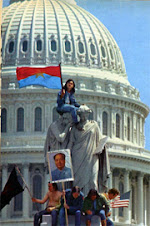


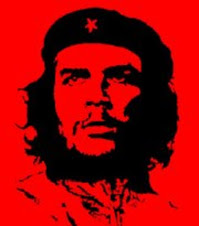






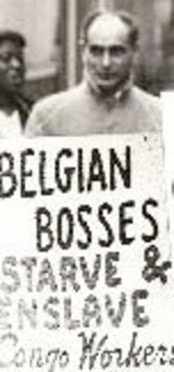

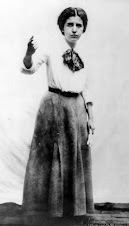
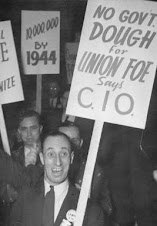
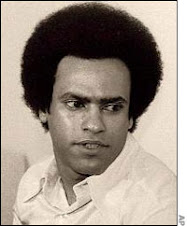



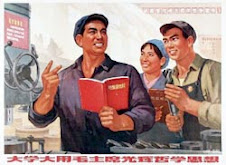
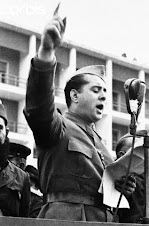


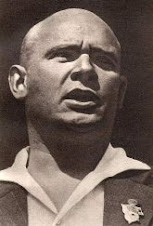
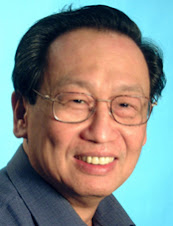



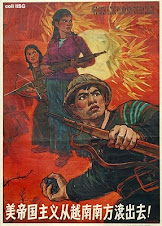
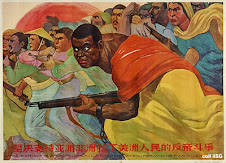






No comments:
Post a Comment